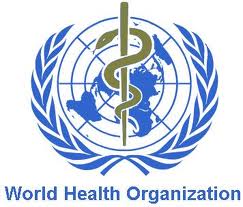What is Chiropractic?
 World Health Organization Definition: Chiropractic is a health care profession with expertise in the diagnosis, treatment and prevention of disorders of the neuro-musculoskeletal system and the effects of these disorders on general health (See reference 1). Like medical physicians, doctors of chiropractic are trained to diagnose as well as treat, except the expertise of the chiropractor is specifically with regard to the spine and musculoskeletal system.
World Health Organization Definition: Chiropractic is a health care profession with expertise in the diagnosis, treatment and prevention of disorders of the neuro-musculoskeletal system and the effects of these disorders on general health (See reference 1). Like medical physicians, doctors of chiropractic are trained to diagnose as well as treat, except the expertise of the chiropractor is specifically with regard to the spine and musculoskeletal system.

Treatment methods: Chiropractors are most well known for their expertise in spinal manipulative therapy (adjustment). In addition, over 50% of North American chiropractors use the following adjunctive therapies: Patient Education; Exercise; Massage; Ice/Heat; Physical Therapy; Electrical Therapy; Ultrasound; Acupressure; Traction; and Nutrition Supplements (See reference 2).
 Conditions treated: Overwhelmingly, patients seen in a chiropractic office are most often being treated for a spine-related problem (76%). When asked to specify their illness or injury, 27% reported it as a neck problem, 22% as a low-back problem, and 21% as a back/spine problem. Extremities account for 13% of the visits to a chiropractor (See reference 2).
Conditions treated: Overwhelmingly, patients seen in a chiropractic office are most often being treated for a spine-related problem (76%). When asked to specify their illness or injury, 27% reported it as a neck problem, 22% as a low-back problem, and 21% as a back/spine problem. Extremities account for 13% of the visits to a chiropractor (See reference 2).
Restricted Activities Within Scope: In all Provinces, chiropractic scope of practice includes making/providing a diagnosis, requisitioning and interpreting plain-film radiographs, and spinal manipulation. In Alberta, chiropractic scope also includes direct referral to medical specialists, requisitioning of special imaging procedures (DEXA, MRI, CT, bone scintigraphy), placement of needles past the dermis (acupuncture), reduction of simple dislocations and setting of simple fractures (setting of Fx requires advanced certification).
Chiropractic Regulation
- Chiropractic is regulated by Law in Canada, the U.S. and over 50 other Countries (See reference 3).
Health Professions Act: Chiropractic is one of many regulated health care professions in Alberta (along with medical doctors, nurses, dentists, and optometrists), regulated by self governing colleges under the Health Professions Act (HPA).
Provincial Regulatory College: Provincial regulatory colleges are charged with licensing, continued competence and public protection. For chiropractors in Alberta, that is the College of Chiropractic of Alberta (CCOA). To be a chiropractor in Alberta, you must be a member, in good standing, with the ACAC.
Fact: There are over 9000 chiropractors licensed and actively practicing in Canada, with over 1000 in Alberta.
Efficacy and Safety
Efficacy – A scientific review concluded that the manual therapies commonly used by chiropractors are effective for the treatment of low back pain, neck pain, some kinds of headaches and a number of extremity joint conditions (See reference 4). For more specific information on the research supporting the treatment of these conditions, see the Chiropractic Research page.
Safety – Manual therapies are generally very safe, when performed by trained professionals; however, there have been some concerns about risks associated with spine manipulation (adjustments). A very large retrospective study recently investigated the occurrence of severe adverse events after spine manipulation (See reference 5). In this study, severe adverse events related to spine manipulation were exceptionally rare, at an incidence of 0.21 per 100,000 spine manipulation sessions. Moreover, there were no adverse events related to stroke or cauda equina syndrome.
Cervical Manipulation and Stroke
There is significant controversy about the level of risk of stroke from neck manipulation (See reference 6). Vertebral artery dissection (VAD) has been reported in association with some forms of neck manipulation (See reference 6), however, there is no convincing evidence to support a causal link between chiropractic manipulation and VAD (See reference 7). Cervical manipulation is performed well within the normal turning range of the head and research indicates that it does not put excessive stress on the vertebral artery (See reference 8).
The highest-quality research available that examined rare cases of stroke found that patients who visit their chiropractor are not more likely to experience a stroke than are patients who visit their family physician (See reference 9). A prospective analysis of 19,000 chiropractic patients, which tracked over 50,000 neck manipulations, found that most patients experience immediate relief following neck manipulation, however, some may experience temporary soreness, stiffness or slight swelling. In very rare situations, patients may experience symptoms such as dizziness, local numbness, or radiating pain (See reference 10).
Chiropractors are well trained to take a careful health histories and perform sensitive and specific physical exams before deciding whether neck manipulation is appropriate for a patient. Chiropractic treatment guidelines help doctors of chiropractic identify patients whose neck pain symptoms are unusual and provide clear advice on when not to perform neck manipulation.
Education
In order to become a doctor of chiropractic in Canada, a student must complete at least 3 years of a university-level undergraduate degree (with a minimum GPA of 3.0), followed by a 4 year accredited Doctor of Chiropractic program. The majority of students entering the Canadian Memorial Chiropractic College (CMCC) have completed a baccalaureate university degree. CMCC is Canada’s only English-speaking chiropractic college; it teaches an evidence-based medicine paradigm, as opposed to the traditional vertebral subluxation model sometimes taught in the United States.
The Doctor of Chiropractic program at CMCC requires four years of full-time study, including 300 hours of human cadaver dissection and 12 months of hands-on clinical experience under faculty supervision. This experience includes training in clinical assessment, diagnosis, treatment, and referral protocols. The multi-disciplinary faculty at CMCC have diverse backgrounds including MD’s and PhD’s that offer students a wide range of expertise in the medical and clinical sciences.
Health Plan Coverage
- The Alberta Provincial Health Care Plan currently covers chiropractic services for seniors (over 65); this coverage amounts to $25/visit to a maximum of $200/year. There is not currently any provincial government funding of chiropractic services for those under 65 years of age in Alberta.
- Chiropractic services are covered by most federal programs, e.g. Veterans Affairs, RCMP, etc.
- Chiropractic services are widely covered under extended health care plans, such as Blue Cross, with the majority of plans providing coverage of at least $500 per annum*.
- Chiropractic care is also covered by MVA and WCB insurance providers.
Research and Guideline Development
Research in chiropractic science is booming. In Canada, the development of knowledge in neuromusculoskeletal (NMS) health and the ongoing publication of research findings in the field of chiropractic is primarily funded through the Canadian Chiropractic Research Foundation (CCRF). In addition to funding millions of dollars worth of individual musculoskeletal-health-based research projects, the CCRF has helped place fully-funded chiropractors, doing high-quality research, in 12 public universities across Canada! Further, the Canadian Chiropractic Guideline Initiative (CCGI) has been tasked to develop evidence-based clinical practice guidelines and best practice recommendations, and facilitate their dissemination and implementation within the chiropractic profession.
References:
1. World Health Organization (2005) (PDF). WHO guidelines on basic training and safety in chiropractic. Retrieved 2012-02-29.
2.Coulter ID, Shekelle PG. Chiropractic in North America: a descriptive analysis. J Manipulative Physiol Ther. 2005 Feb;28(2):83-9.
3. World Federation of Chiropractic. Legal Status of Chiropractic by Country . Retrieved on April 18, 2012. http://www.wfc.org/website/index.php?option=com_content&view=article&id=123&Itemid=139&lang=en
4. Bronfort G, Haas M, Evans R, Leininger B, Triano J. Effectiveness of manual therapies: the UK evidence report. Chiropr Osteopat. 2010 Feb 25;18:3.
5. Chu EC, Trager RJ, Lee LY, Niazi IK. A retrospective analysis of the incidence of severe adverse events among recipients of chiropractic spinal manipulative therapy. Sci Rep. 2023 Jan 23;13(1):1254.
6. Haynes MJ, Vincent K, Fischhoff C, Bremner AP, Lanlo O, Hankey GJ. Assessing the risk of stroke from neck manipulation: a systematic review. Int J Clin Pract. 2012 Oct;66(10):940-7.
7. Church EW, Sieg EP, Zalatimo O, Hussain NS, Glantz M, Harbaugh RE. Systematic Review and Meta-analysis of Chiropractic Care and Cervical Artery Dissection: No Evidence for Causation. Cureus. 2016 Feb 16;8(2):e498.
8. Herzog W, Leonard TR, Symons B, Tang C, Wuest S. Vertebral artery strains during high-speed, low amplitude cervical spinal manipulation.J Electromyogr Kinesiol. 2012 Apr 5. [Epub ahead of print]
9. Cassidy JD, Boyle E, Côté P, He Y, Hogg-Johnson S, Silver FL, Bondy SJ. Risk of vertebrobasilar stroke and chiropractic care: results of a population-based case-control and case-crossover study. Spine (Phila Pa 1976). 2008 Feb 15;33(4 Suppl):S176-83.
10. Thiel HW, Bolton JE, Docherty S, Portlock JC. Safety of chiropractic manipulation of the cervical spine: a prospective national survey. Spine (Phila Pa 1976). 2007 Oct 1;32(21):2375-8; discussion 2379.

Introduction to Chiropractic in Canada by Dr. Aaron Puhl is licensed under a Creative Commons Attribution-NonCommercial 4.0 International License.
